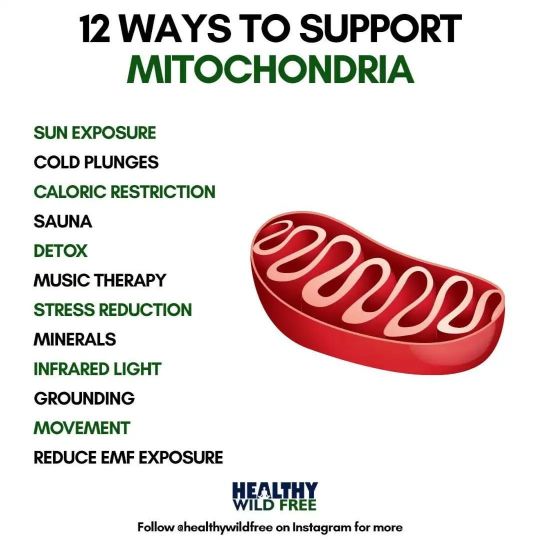#vitamind
Text

Gimme some SUN
52 notes
·
View notes
Text

#Sunshine#SunLover#StayInTheSun#NatureConnection#Warmth#SunnyDays#EmbraceTheSun#VitaminD#OutdoorLife#ChasingSunlight#photography
20 notes
·
View notes
Photo

Even Rompers Needed French Cachet: McCalls Kiddy Patterns in 1928
Although rompers had been worn by American children before 1928, these were supposed to follow French fashion, as the words “L’Echo de Paris” indicated in the pages of McCalls Magazine. While Paris fashion houses were seen as the source of all new trends for women’s clothing, here they were supposedly also the source for children’s clothing.
The first rompers in America had straps at the shoulders and were touted as a way to let children get their vitamin D through exposure to the sun as a time when vitamins were the big news in popular science. These sewing patterns, sold by McCalls, instead took the idea of the blouse and attached it to the puffy short pants that made up rompers. Notice the details as a result: buttons, collars an cuffs in contrasting fabrics, and the pink one has a yoke from which gathers fall while the floral one has little shoulder pleats. The pink one looks like it has piping at the collar and cuffs while the floral one’s collar is shaped and top-stitched. A lot of detail for something for a small person. Of course, they expected them to be made in cottons, an easy to wash fabric, very practical for little people who roll around on lawns.
The pink one has snaps at the crotch to make it easy for a little person to use the bathroom, while the floral one has a buttoned drop seat. Tots’ jumpsuits were thus more practical than those often sold to women these days. Not that I am suggested we improve on women’s rompers. It is ok by me if we grownups have shirttails to tuck in.
#rompers#vintagerompers#childrensrompers#childrensclothing#vintagechildrensclothing#vintagefashion#mccallspatterncompany#mccallspatterns#vintagesewingpatterns#vintagesewingpattern#sewing#making#vitaminD#costumehistory#dresshistory#fashionhistory#sewingpattern#sewingpatterns
16 notes
·
View notes
Photo

🥛🍳 Get your daily dose of vitamin D! 🌞 Explore dietary sources like fatty fish, fortified dairy products, and eggs to keep your levels in check. 🐟🥚 #VitaminD #NutritionTips #EatWellLiveWell https://www.smarteatinghabits.com/vitamin-d-the-sunshine-nutrient-for-optimal-health-and-well-being/
2 notes
·
View notes
Photo

Sunshine vibes..getting that D... while I can #sunshine🌞 #sunshinevibes☀️ #vitamind #downtownmiluakie #sundayfunday #weekendvibes #downbytheriver (at Milwaukie Riverfront Park) https://www.instagram.com/p/CjyrOSVvuKP/?igshid=NGJjMDIxMWI=
11 notes
·
View notes
Photo

K I feel like I got enough Vitamin D. I can go back home for a while. #sunshine #vitamind #photooftheday #photoofday #picoftheday #instagood #tan #swimming #pool (at Panama City Beach, Florida) https://www.instagram.com/p/CdoY1XRvb_J/?igshid=NGJjMDIxMWI=
14 notes
·
View notes
Photo

Dem #Frühling entgegen … #sonne #motivation #vitaminD https://www.instagram.com/p/ConOvHPtlEm/?igshid=NGJjMDIxMWI=
5 notes
·
View notes
Video
youtube
BEST WAY TO GET VITAMIN D? SKIP THE SHOWER! #findingnaturalcures #vitamind
#youtube#findingnaturalcures#finding natural cures#natural cures#vitamin d#vitamin d deficiency#how to get vitamin d naturally#how to get vitamin d from dun#vitamind#how to sunbathe#how to sunbathe to get vitamin d
6 notes
·
View notes
Text


Photos of friends and neighbors getting some vitamin D3 the natural way - from the sun
I have a few thousand photos of friends and neighbors using my secluded property to catch some rats and get their vitamin D3. I have permission to use all photographs appearing in this section and all subsequent posts.
I’ll be posting a few photos here and there until the better part of the collection is online.
3 notes
·
View notes
Photo

Your Mitochondria are the powerhouse🔋of the cell. They take in glucose and oxygen and produce nergy from this input in the form of ATP. These 12 ways support your mitochondrial health.. 1. Sun exposure 🌞 2. Cold plunges 🥶 💧 3. Caloric restriction (fasting) 4. Sauna 🔥 🥵 5. Detoxification 6. Music therapy 🎶 7. Stress reduction 😩 8. Mineralization 🪨 9. Infrared light ✨️ 10. Grounding/Earthing 🌏 11. Reducing EMF exposure 📱 13. Movement 🚲 The more you engage or disengage in these activities the healthier your Mitochondria and energy levels will be. #Mitochondria #mitochondrial #sunexposure #sunshine 🌞 #vitamind #coldplunge #cryotherapy #cryo #musictherapy #stressreduction #minerals #electrolytes #infraredtherapy #grounding #earthing #reduceemf #emf #radiation #movement #move #energy (at Atlanta, Georgia) https://www.instagram.com/p/Cj33sCPtCZN/?igshid=NGJjMDIxMWI=
#mitochondria#mitochondrial#sunexposure#sunshine#vitamind#coldplunge#cryotherapy#cryo#musictherapy#stressreduction#minerals#electrolytes#infraredtherapy#grounding#earthing#reduceemf#emf#radiation#movement#move#energy
3 notes
·
View notes
Text

#bonehealth#osteoporosis#health#healthylifestyle#calcium#vitamind#healthybones#jointhealth#osteoporosisprevention#wellness#nutrition#bones#strongbones#fitness#bonedensity#osteoporosisawareness#jointpain#womenshealth#hearthealth#healthyliving#healthy#vitamins#supplements#bone#osteoporosisday#skinhealth#worldosteoporosisday#vitamink#osteoporosissoc#arthritis
2 notes
·
View notes
Photo

SURVIVAL III : Winter, 2020 - 2021 : Hippie Village.
1 note
·
View note
Text
Brigham Study of Supplemental Vitamin D and Risk of Bone Fractures Reported in NEJM
MedicalResearch.com Interview with:

Dr. LeBoff
Meryl S. LeBoff, MD
Chief, Calcium and Bone SectionDirector of the Skeletal Health and Osteoporosis CenterDirector, Bone Density UnitDistinguished Chair in Skeletal Health and Osteoporosis
Professor of Medicine, Harvard Medical School
Endocrinology, Diabetes and Hypertension, Women's Health
Brigham And Women's Hospital

Dr. Manson
JoAnn E. Manson, MD, DrPH
Professor, Epidemiology, Harvard T.H. Chan School Of Public Health
Michael and Lee Bell Professor of Women's Health, Medicine, Harvard Medical School
Chief, Preventive Medicine, Brigham And Women's Hospital
Co-Director, Womens Health, Brigham And Women's Hospital
MedicalResearch.com: What is the background for this study? What are the main findings?
Response: Osteoporosis is a major public health problem. Although supplemental vitamin D has been widely used to reduce the risk of fractures in the general population, studies of the effects of vitamin D on fractures, the most important bone health outcome, have been conflicting.
Randomized controlled trials, the highest quality studies, from around the world have shown benefit, no effect, or even harm of supplemental vitamin D on risk of fractures. Some of the trials used bolus dosing, had small samples sizes or short study duration, and co-administered calcium. No large RCTS of this scale tested whether daily supplemental vitamin D (without co-administration with calcium) prevented fractures in the US population.
To fill these knowledge gaps, we tested the hypothesis in this ancillary study to VITAL, whether daily supplemental vitamin D3 reduced the risk of incident total, non-spine and hip fractures in women and men in the US.
MedicalResearch.com: Are there potential risks of high dose Vitamin D supplementation?
Response: Supplemental vitamin D (2000 IU/d) over a median of 5.3 years was safe and there were no differences between the supplemental vitamin D and placebo groups in risk of hypercalcemia, kidney stones or kidney disease. A Data Safety Monitoring Board carefully monitored the safety of this intervention in the main VITAL study.
MedicalResearch.com: What should readers take away from your report?
Response: In this, the largest placebo-controlled randomized clinical trial including 25,871 participants enrolled from 50 states and a median follow-up of 5.3 years, supplemental vitamin D3 (2000 IU/d) did not reduce fracture risk in generally healthy, midlife and older women and men, not preselected for vitamin D deficiency or osteoporosis.
Our results do not support the use of vitamin D supplements to prevent fractures in generally healthy US men and women. These results do not apply to older adults in residential communities or those with severe vitamin D deficiency, low bone mass or osteoporosis
MedicalResearch.com: What recommendations do you have for future research as a result of this work?
Response: Our ongoing studies are focusing on whether free vitamin D levels or genetic variation in vitamin D absorption, metabolism, or receptor function will provide information about individuals who may benefit from supplemental vitamin D on musculoskeletal health.
MedicalResearch.com: Is there anything else you would like to add?
Response: We would like to thank the NIH for supporting this VITAL ancillary study. Acknowledgments are included in the NEJM manuscript.
Citation:
Supplemental Vitamin D and Incident Fractures in Midlife and Older Adults
M.S. LeBoff and Others
N Engl J Med 2022;387:299-309
The information on MedicalResearch.com is provided for educational purposes only, and is in no way intended to diagnose, cure, or treat any medical or other condition. Always seek the advice of your physician or other qualified health and ask your doctor any questions you may have regarding a medical condition. Some links may be sponsored and no links are warranted or endorsed by MedicalResearch.com or its parent company, Eminent Domains Inc. In addition to all other limitations and disclaimers in this agreement, service provider and its third party providers disclaim any liability or loss in connection with the content provided on this website.
Read the full article
2 notes
·
View notes
Text
Vitamin D Deficiency - A Growing Problem For Young & Old In 2022

Vitamin D deficiency is a growing problem in the United States. It is estimated that about 1 in 10 Americans are deficient in vitamin D.
This study found that women who were deficient had a higher risk of developing breast cancer.
The researchers concluded that this deficiency might be related to the development of breast cancer, and it can be prevented by taking supplements or getting more sun exposure.
We need vitamin D to stay healthy, but it's important for our bones and immune system.
It is a catalyst for bone growth, and it helps to regulate the immune system. It's important for overall health and wellness, so it's recommended that we all have enough of this vitamin in our diet.
However, with more time spent indoors and less exposure to sunlight, many people are becoming deficient in Vitamin D. It's been proven that supplementation can help combat this deficiency.

Why Vitamin D Deficiency A Huge Problem in the U.S.
Vitamin D deficiency has become a huge problem in the United States, with one in four people considered deficient according to some studies. It affects millions of people, and it is becoming increasingly common among healthy adults.
It can lead to a wide range of health issues including bone fractures, autoimmune diseases, and cardiovascular disease. Deficiency has been linked to an increased risk for breast cancer in women, which makes it a public health concern for all women.
Current Vitamin D Status in the United States
Vitamin D deficiency is a problem in the United States, with many people not getting enough of it. The problem is especially prevalent in children and elderly people.
Many people are unaware of the symptoms of this deficiency, which can lead to serious health problems.
The National Health and Nutrition Examination Survey found that about 38% of Americans have low levels of this vitamin, with most being deficient.
Benefits of Supplements
Your body needs Vitamin D to easily absorb calcium, and it helps produce hormones that are needed for bone health. It's important to get enough Vitamin D every day so your bones stay strong. It also helps with the prevention of certain diseases, such as osteoporosis and rickets.
However, even if you are taking a supplement, it's important to be sure that you're getting enough vitamin D from your diet. A recent study found that people who ate more calcium and vitamin D had higher bone mineral density than those who didn't eat these nutrients.
Vitamin D is known to affect mood and cognitive function. With its help, we can improve our mood and mental alertness as well as increase our memory capacity.
To buy Supplement from Amazon: Buy Now
How to Avoid Low Vitamin Level Problems
Vitamin D deficiency is a common issue in the United States. There are many reasons for this including lack of exposure to sunlight, dark skin, and low levels of Vitamin D in food.
Some easy ways to increase your daily intake include taking supplements, eating foods rich in Vitamin D, and exposing yourself to sunlight. However, there are also some disadvantages to increasing your intake of it which include increased risk for vitamin toxicity and too much sun can cause skin cancer.
The best way to avoid low vitamin level problems is by getting enough exposure to sunlight every day.
Your Body Vitamin D Needs Change With Age
Vitamin D is a crucial nutrient that helps in bone and muscle health. It plays a key role in reducing the risk of various chronic diseases like cancer and heart disease. The older you are, the more your body needs.
People, aged 1-70 years need at least 600 IU of vitamin D a day to maintain bone health and prevent osteoporosis. For 70 plus age, you need a minimum of 800 IU of vitamin D.
As you age, the percentage of the population living with this vitamin deficiency skyrockets, and nutritionists recommend upping your intake of vitamin-rich foods and getting up to 30 minutes of sun exposure daily.
When you've been struggling to get enough vitamin D for a long time, it's important that you address the issue with your physician. You may be deficient no matter at any age.
https://youtu.be/neqi8l_-ALY
Vitamin D Rich Foods to eat at any age
Vitamin - D is not widely found in many food sources, but there are a few key ones that you can increase your intake of. Eating more of these ingredients will help to make up for it:
Eggs
Salmon
Mushrooms
Tuna
- Orange Juice
- Cheese
It is becoming more important to take more vitamin-rich foods with growing age. It becomes increasingly critical when winter kicks in since it helps to support the health of your bones and muscles, which are crucial for staying healthy.
Conclusion: Increase Your Daily Intake of Vitamins and Stay Healthy
Vitamin - D is a nutrient that is important for bone health, immunity, and general health. However, it can be difficult to get enough of it in the winter months. There are some key ways to increase your daily intake in the winter without exposing yourself to too much sun.
It is important for your immune system, mood, and weight. There are many other good reasons to make sure you're getting enough of this vitamin. It strengthens bones and teeth, helps with muscle weakness, boosts the immune system, and can help improve cognitive function.
However, to keep your vitamin levels up, it's important to use a safe and effective method of increasing your daily intake.
Read More :
Morning Yoga for Beginners | Quick and Easy Yoga Routines
Read the full article
#boneandmuscle#bonegrowth#breastcancer#Eggs#fruits#fruitsandvegetables#nutrients#osteoporosis#Vitamin#VitaminD#VitaminDdeficiency#VitaminDFruits#VitaminDIntake#VitaminDSupplements
2 notes
·
View notes
Text
Vitamin D & sunlight
Interesting how the PC editor automatically shows a title option but the (Android) phone editor doesn't.
At least a year ago, I was pretty actively deconstructing. At some point, I set up a time on my calendar on Sunday mornings to take some time for doing home office-type stuff: updating the checkbook register and the budget (b/c I really don't take advantage, sadly, of all the tools on my budgeting sw), updating the calendar, journaling, etc. Shortly after setting that up, though, I started sleeping through it. :-( I was so tired by the weekend, that I would sleep so late. A couple of months ago, I was telling my doctor how tired I was all the time, how my brain wasn't working, body aches -- very typical perimenopause symptoms. He ordered bloodwork. Within 2 days I had a notification forwarded from the labs--low vitamin D, recommend 2K-5K IU/day asap. I started taking 2K twice a day. Within a month my aches are noticeably less, I have more energy, it's easier to wake up and stay awake. Maybe one of these mornings I'll actually get some early exercise in like I used to! It also helps that there are more daylight hours. For the record, while I do appreciate the later sunset in March, I think we should move the beginning of DST back into April like it used to be. I think the suddenly later sunrise throws me off more than the fact that it's a hour change. I think I could adapt more easily to the time change if I weren't suddenly waking up in the dark again.
0 notes